What is a Car Power Inverter?
A power inverter for car is a device that lets you use electrical gadgets in vehicles. It bridges the gap between automotive power systems and standard household electronics, ensuring their functionality during travel.
Definition and Functionality
A car power inverter converts the DC (direct current) energy from your vehicle’s battery into usable AC (alternating current) power. It’s useful for charging laptops, phones, or running small appliances while driving. This enables travelers and commuters to stay connected or powered up effortlessly.
Typical models are compact and plug directly into the car’s 12-volt outlet or connect to the battery. They vary in wattage output, supporting different types of devices, from simple USB-powered gadgets to more demanding machines.
How it Converts DC to AC Power
Car batteries produce DC energy while most electronics require AC power to work. The inverter uses circuits to alter the electrical form into the required AC format.
First, it boosts the low voltage DC power to match the AC voltage range. Then, it processes the current into a waveform, either modified sine wave or pure sine wave. The result is a stable and usable AC output that powers your electronic devices without trouble.
Modern inverters often include safety mechanisms to regulate voltage and prevent damage to devices. Understanding how DC transforms into AC helps users choose the right power inverter for their car.
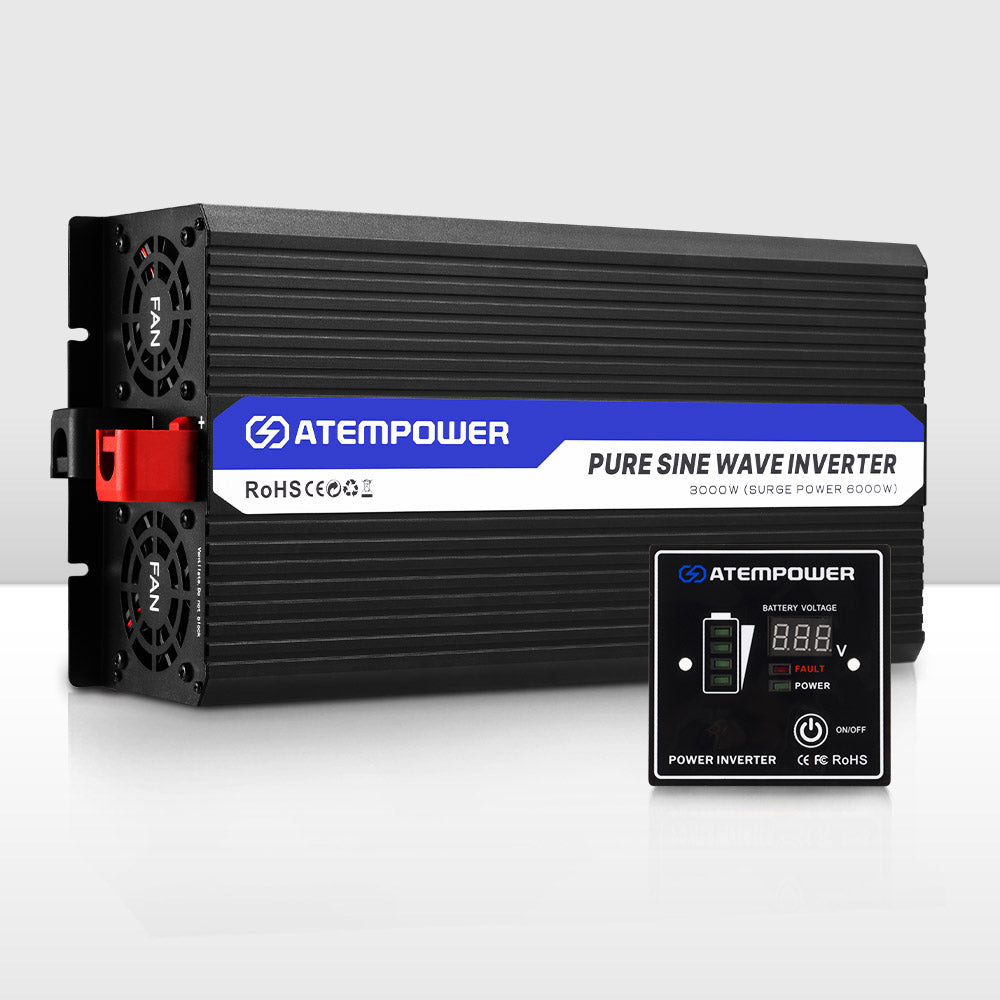
Key Features to Look for in a Car Power Inverter
When choosing a power inverter for car, you need to consider several important features. The right selection ensures you get reliable and safe power for your devices while on the road.
Wattage Capacity
Wattage capacity defines how much power the inverter can handle. Different devices require varying levels of power. For example:
- Small electronics like phones need low wattage, around 100 watts.
- Laptops and gaming consoles require mid-range wattage, around 300-500 watts.
- Power tools or larger appliances may need 1000 watts or more.
Check your devices’ power ratings. Ensure the inverter’s wattage capacity matches your usage. Choose models with slightly higher wattage than your peak needs to avoid overloading.
Number and Type of Outlets
The type and number of outlets determine the versatility of the inverter. Common outlet options include:
- Standard AC outlets for appliances like laptops.
- DC outlets for powered car accessories.
- USB ports for charging small devices.
Inverters with multiple or mixed outlet types provide more flexibility. This allows you to power several devices at once.
USB Port Availability
Modern car power inverters usually have USB ports for added convenience. These ports are great for charging smartphones, tablets, or cameras. Look for inverters with fast-charging USB ports, typically offering 2.4A or higher. Some models have multiple USB ports, which are helpful for family trips.
Built-in Safety Features
Safety is a top priority when using a car power inverter. Look for models with built-in protections like:
- Overload protection to prevent damage.
- Overheating protection with a cooling fan.
- Short-circuit protection for device safety.
- Automatic shut-off for low battery voltage.
These features protect your devices and car battery from potential damage or failure. Investing in a safe and reliable inverter saves you trouble and money in the long run.
By focusing on these key features, you can find the ideal power inverter for car that fits your needs perfectly.
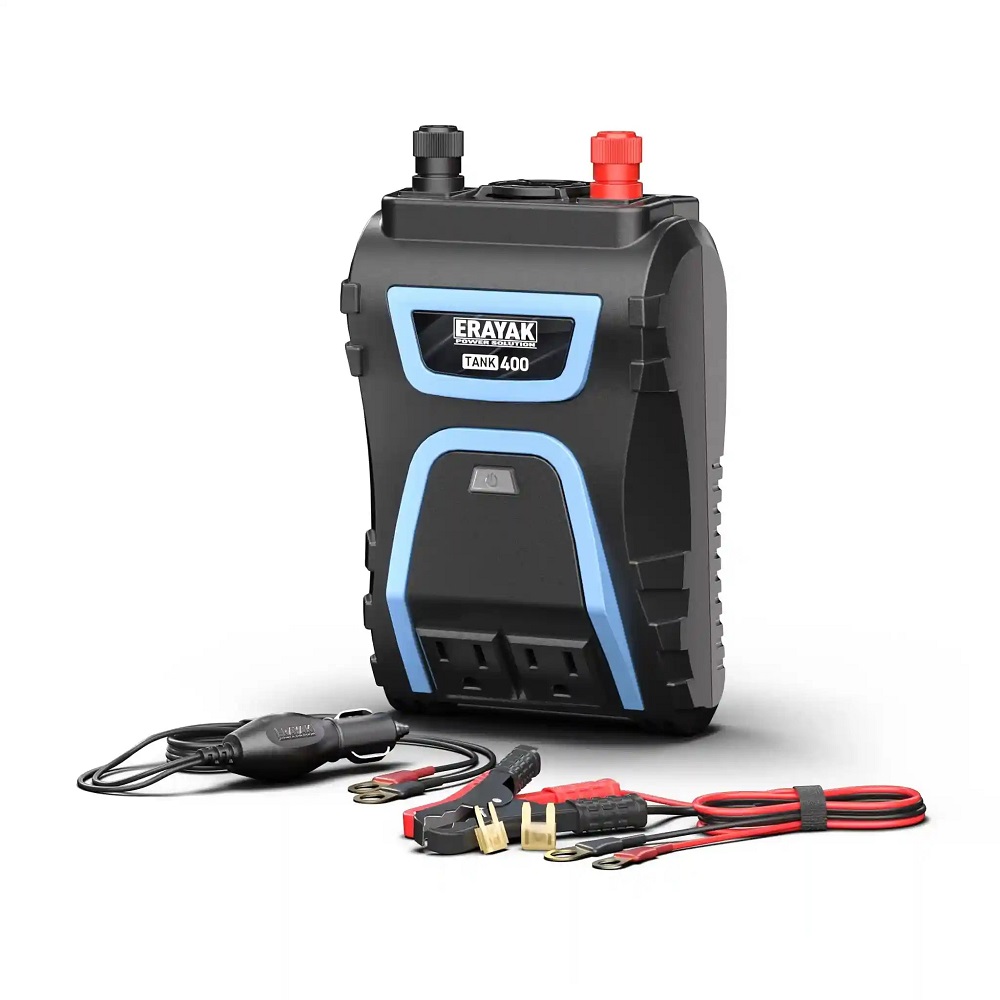
Types of Car Power Inverters
Car power inverters come in two main types: modified sine wave and pure sine wave. Understanding these types helps you choose the best option for your needs.
Modified Sine Wave Inverters
Modified sine wave inverters are more affordable and commonly used. They convert power into a stepped, rectangular waveform. This form is suitable for simple devices like phone chargers, fans, and some small appliances.
Advantages:
- Lower cost compared to pure sine wave inverters.
- Sufficient for basic electronics and tools.
- High availability with compact sizes.
Disadvantages:
- Not ideal for sensitive electronics like medical equipment or high-precision devices.
- May cause a humming noise in some devices.
- Slightly less efficient than pure sine wave inverters.
Pure Sine Wave Inverters
Pure sine wave inverters produce a waveform similar to household AC power. They are better for sensitive and complex electronics, such as laptops, TVs, and medical devices.
Advantages:
- Ensures compatibility with all types of devices.
- Provides stable and clean power without interference.
- Enhances efficiency and lifespan of connected appliances.
Disadvantages:
- Higher cost than modified sine wave inverters.
- Bulkier and less portable.
- Consumes slightly more power during conversion.
Pros and Cons of Each Type
When choosing between these types, consider your usage:
- If you need an inverter for basic gadgets, a modified sine wave model suffices. It’s budget-friendly and portable.
- For high-performance devices or sensitive equipment, invest in a pure sine wave inverter. It ensures safety and reliability.
Balancing cost, performance, and device compatibility is crucial. Select the type that meets your power requirements and budget effectively.
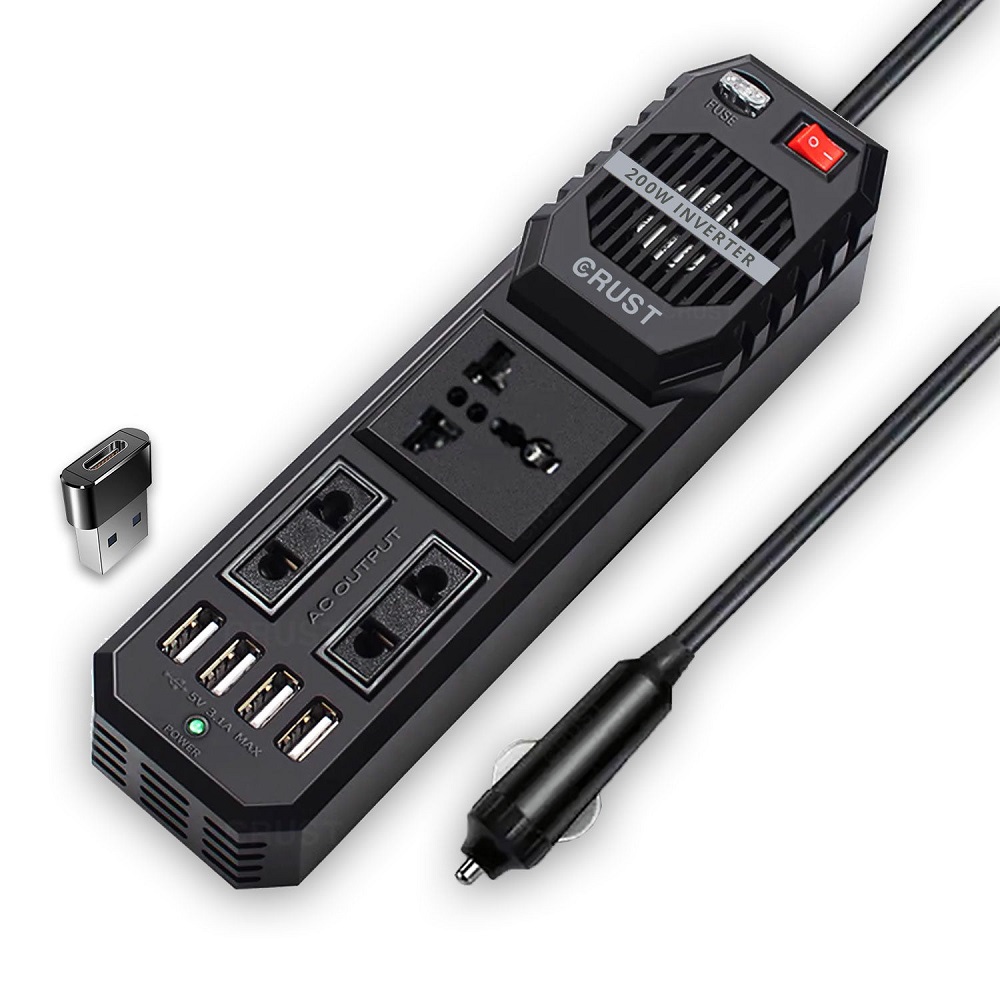
Steps to Determine the Right Inverter for Your Needs
Assessing Your Power Requirements
Understanding your power needs is crucial when selecting a car power inverter. Start by identifying the devices you plan to use. Check their wattage ratings to estimate the total power requirement. For example, small gadgets like smartphones need less than 100 watts, while laptops might require up to 300 watts.
Choose an inverter with a capacity slightly higher than your total wattage needs. This ensures consistent performance and prevents overloading. If you plan to power multiple devices simultaneously, account for their combined wattage to select the appropriate inverter size.
Checking Compatibility with Your Vehicle
Not all inverters suit every car model. Verify that your chosen inverter matches your vehicle’s electrical system. Most cars have a 12-volt DC power supply, but some larger vehicles use 24 volts.
Ensure the inverter has compatible input options. Some models plug into the car’s cigarette lighter socket, while others connect directly to the battery. If you drive a smaller car, choose compact inverters to save space. For trucks or RVs, a larger, high-capacity inverter might be more practical.
Considering Portability and Size
Portability and size are important factors, especially for travelers. Compact inverters are easier to carry and store. They fit snugly in a glove compartment or bag.
For heavy-duty power needs, larger inverters may be necessary. However, check if their size and design suit your vehicle. Ensure they are easy to install and don’t obstruct other components in the car.
Balancing portability, compatibility, and power needs helps you choose the perfect car power inverter.
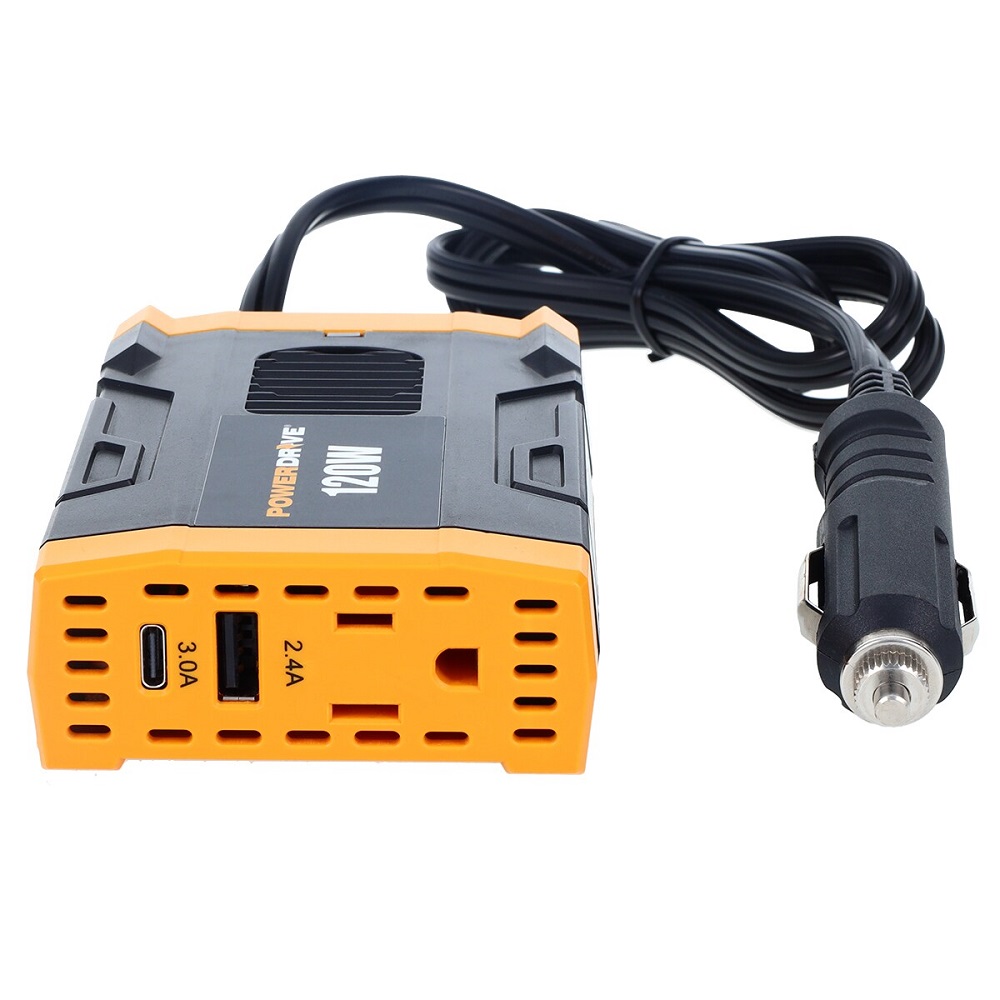
Installation and Usage Tips
Proper installation and correct usage are essential for safely and efficiently using a power inverter for car. Following these tips ensures optimal performance and longevity.
Proper Installation Procedures
- Choose the right location: Install the inverter in a dry, ventilated area away from heat sources.
- Inspect wiring: Use high-quality cables to connect the inverter to the battery securely.
- Understand polarity: Avoid reversing the wires as this can damage the inverter and your vehicle.
- Firmly secure connections: Tighten clamps to prevent accidental loose connections during use.
- Test after installation: Check for proper functionality before plugging devices into the inverter.
Tips for Safe Usage
- Follow power limits: Always keep device usage within the inverter’s rated wattage capacity.
- Avoid moisture exposure: Prevent the inverter from getting wet to minimize risks and maintain efficiency.
- Unplug unused devices: Disconnect equipment when not in use to reduce strain on the inverter.
- Monitor heat levels: Ensure the inverter does not overheat by checking built-in cooling mechanisms like fans.
- Use safety features: Leverage overload protection and shut-off systems for added device and car battery safety.
Maintenance and Longevity of the Inverter
- Regularly clean vents: Clear dust and debris for efficient cooling and better performance.
- Inspect connections: Regularly check cables and clamps for wear and replace if needed.
- Monitor usage: Avoid extended operation beyond recommended temperature and load limits.
- Store properly: Keep the inverter in a safe, dry, and cool place when not in use.
- Update components: Upgrade parts when available, ensuring compatibility and improved reliability.
By following these tips, your car power inverter can provide safe and lasting power to your essential devices.
Top Brands and Models to Consider
Selecting the right power inverter for car can be a challenge. Exploring trusted brands helps simplify your choice. Reliable manufacturers design durable, efficient, and user-friendly power inverters for various needs.
Overview of Popular Brands
Here are some well-known brands offering quality car power inverters:
- BESTEK: Known for affordability and versatility. Their models often include multiple outlets and USB ports.
- AIMS Power: Specialized in high-capacity inverters ideal for trucks and RVs.
- Duracell: Provides compact and reliable inverters for everyday use.
- Xantrex: Premium brand offering pure sine wave inverters for sensitive devices.
- KRI?GER: Focused on durable and safety-oriented designs with overload protection.
These brands cater to various requirements and budgets, ensuring you find an efficient inverter.
Key Features of Recommended Models
Here are features to look for in top car power inverter models:
- Voltage Compatibility: Choose 12V DC or 24V DC models based on your car’s system.
- Wattage Range: Select models offering 100 watts to 3000 watts, depending on your needs.
- Safety Features: Look for overload, short-circuit, and overheating protection.
- Outlets and Ports: Ensure they include AC outlets and USB ports for flexibility.
- Compact Design: Choose portable models for ease of storage and installation.
Some recommended models include:
- BESTEK 300W Power Inverter: Compact and includes USB ports for small devices.
- AIMS Power 2000W Pure Sine Inverter: Ideal for larger appliances and RVs.
- Duracell 150W Slim Inverter: Portable and efficient for basic gadget use.
- KRI?GER 1100W Power Inverter: Offers robust safety features and reliable performance.
- Xantrex Pro 1000W True Sine Wave Inverter: Perfect for sensitive electronics.
By choosing a trusted brand and suitable model, you can ensure reliable power for your devices.
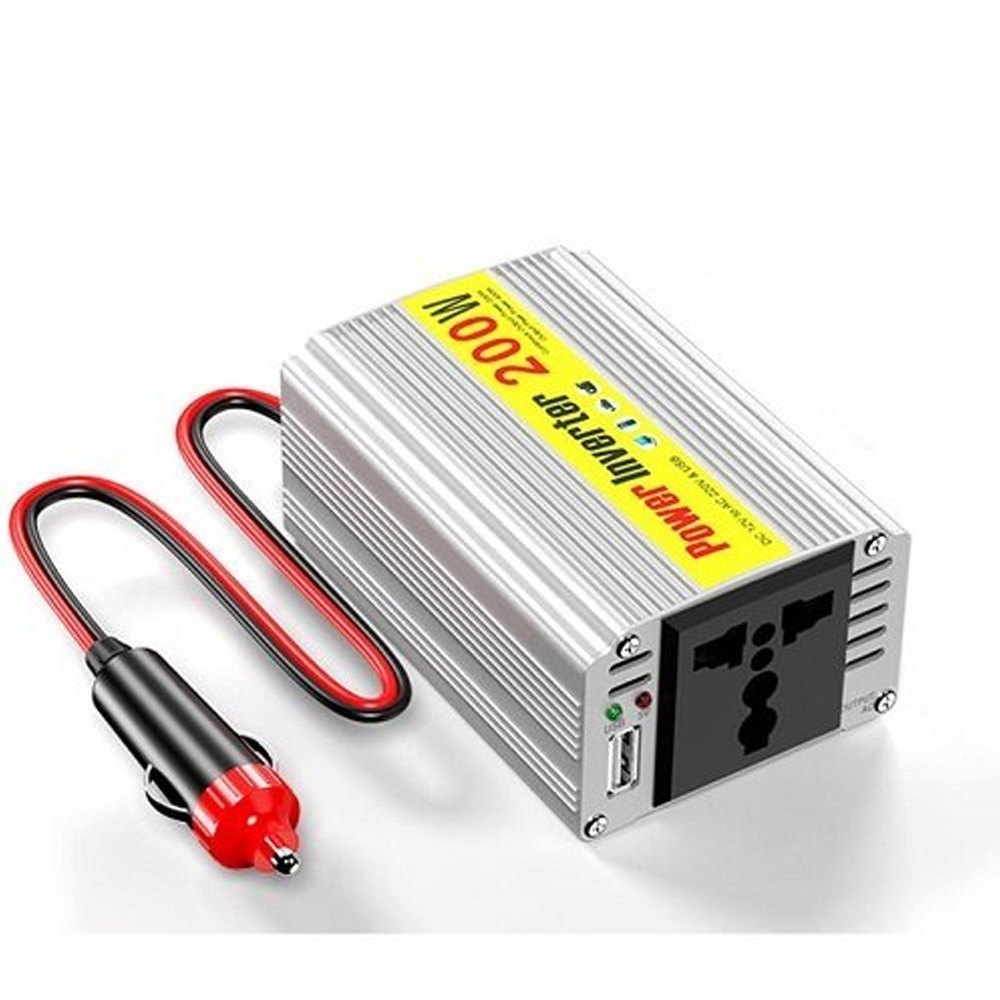
Common Mistakes to Avoid When Choosing a Car Power Inverter
Selecting the right power inverter for car can be tricky. Avoiding common mistakes ensures the inverter meets your needs without issues. Below are key pitfalls to watch for.
Ignoring Wattage Requirements
One common mistake is neglecting wattage needs. Every device requires a specific wattage to operate. If the inverter’s capacity is lower than your devices’ total power demand, it will fail or shut off.
- Assess total power needs: Check each device’s wattage. Add them to calculate the required inverter wattage.
- Choose slightly higher wattage: Select an inverter with 10-20% more capacity than your total requirement.
- Account for future needs: Plan for additional devices you may use later.
Ignoring wattage can lead to unreliable performance or damage to the inverter and devices.
Overlooking Safety Features
Some buyers ignore inverter safety features, which increases risks while using devices in your car.
- Look for built-in protections: Key features include overload, overheat, and short-circuit protection.
- Ensure automatic shut-off: Protect your car’s battery by choosing inverters with low-voltage cut-off.
- Inspect cooling mechanisms: Prevent overheating by choosing models with proper ventilation and cooling fans.
Skipping safety features might lead to device failure or battery drain, which can become costly.
Buying an Inverter Without Understanding Your Needs
Sometimes, buyers pick a car power inverter based on price alone. This often results in choosing the wrong model.
- Identify device types: Know the devices you plan to power (e.g., laptops, phones, or appliances).
- Determine inverter type: Choose between modified sine wave or pure sine wave inverters based on device sensitivity.
- Check installation options: Decide if you need a lighter plug or direct-to-battery connection.
Failing to understand your needs may result in compatibility issues, waste money, or put your devices at risk.
By avoiding these mistakes, you can select a power inverter for car that ensures safe and reliable performance.
FAQ About Car Power Inverters
Can I Run Multiple Devices Simultaneously?
Yes, you can run multiple devices simultaneously using a power inverter for car. However, it depends on the inverter’s wattage capacity and the combined power demands of your devices. First, check the wattage requirements for each device you plan to use. If their total power consumption exceeds the inverter’s rated capacity, you may risk overloading it. To avoid this:
- Choose an inverter with a wattage slightly higher than your combined needs.
- Prioritize devices that use less power if using a smaller-capacity inverter.
- Ensure outlets and ports allow simultaneous connections without interruptions.
Using multiple devices smartly ensures stable operation and avoids damaging your inverter or car battery.
Are Car Power Inverters Safe to Use?
Car power inverters are safe to use if installed and operated correctly. Modern inverters include built-in safety features to reduce risks. These features protect your devices and car during operation. To ensure safety:
- Overload protection: Prevents the inverter from exceeding its power limits.
- Overheating safeguards: Cooling fans regulate temperature during prolonged use.
- Short-circuit protection: Shields your car’s electrical system from accidental faults.
- Automatic shut-off: Stops operation if your car battery’s voltage drops too low.
Follow installation procedures carefully and keep the inverter dry. Regular maintenance checks help avoid performance issues. By using an inverter designed for your needs, you ensure safe and reliable power for your devices.
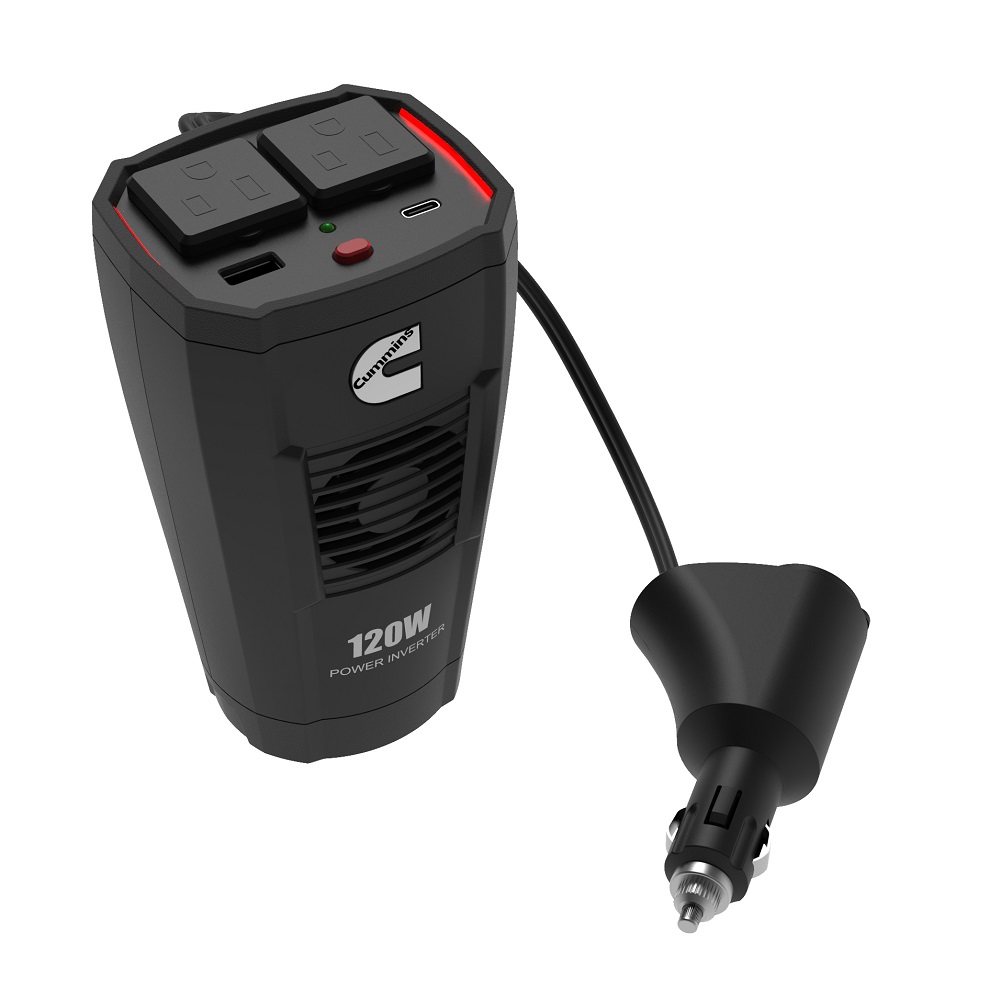
Leave a Reply